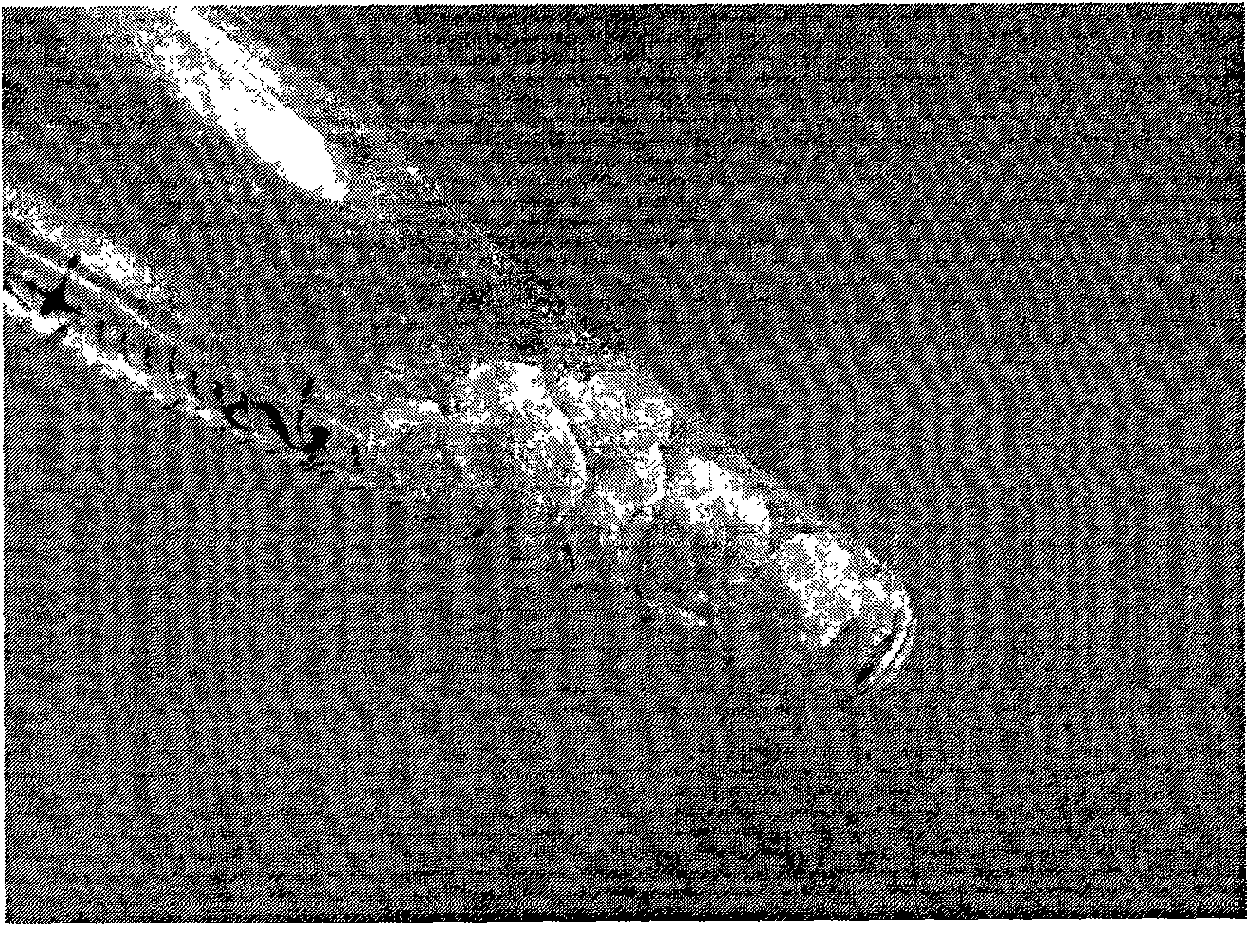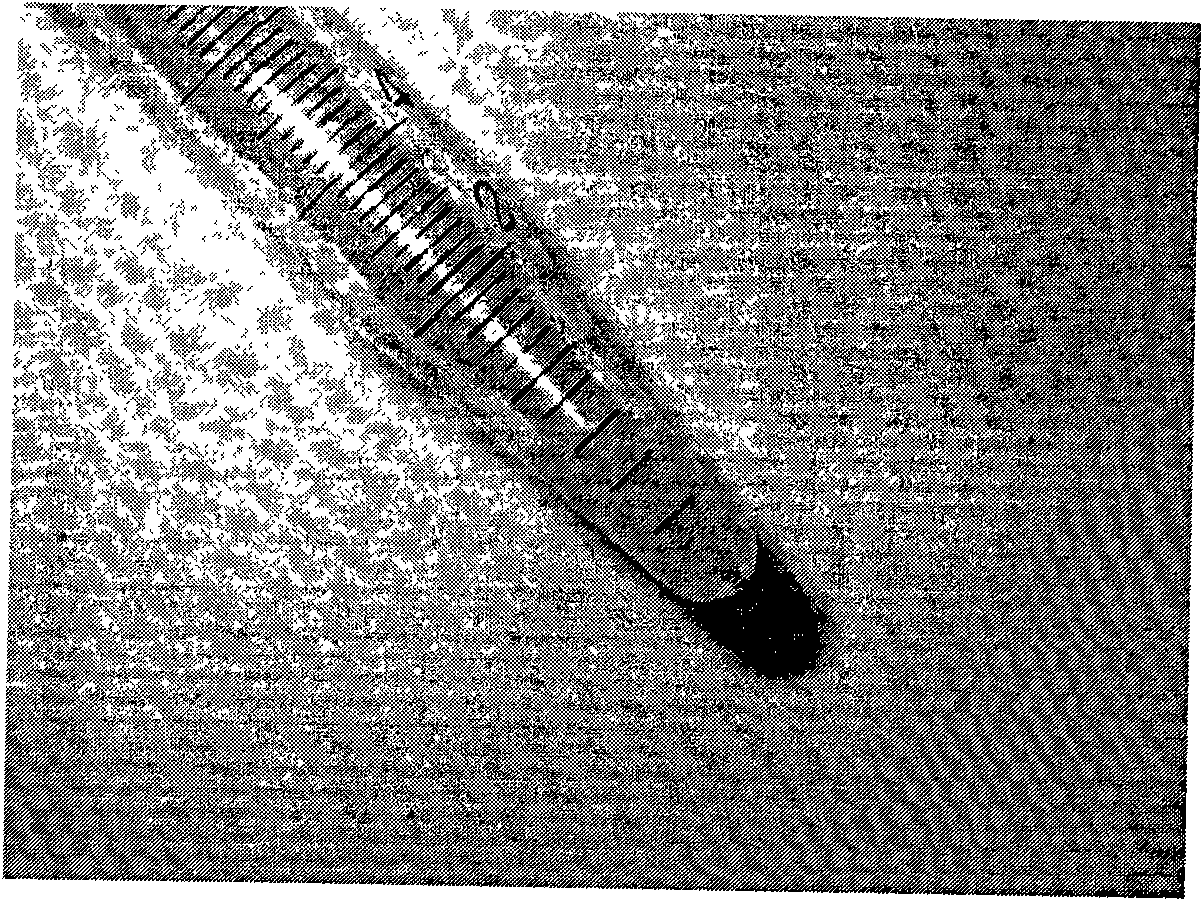Injectable myocardial tissue engineering product used for treating myocardial infarction
A technology of tissue engineering and myocardial infarction, which is applied in the field of products for the treatment of myocardial infarction, can solve the problems of myocardial infarction products that have not been reported yet, and achieve the effect of increasing the wall thickness of the infarcted area, increasing blood supply, and mild implementation conditions
- Summary
- Abstract
- Description
- Claims
- Application Information
AI Technical Summary
Problems solved by technology
Method used
Image
Examples
Embodiment 1
[0043] Embodiment 1: the preparation of OPF
[0044] Dissolve 30 g of polyethylene glycol with a molecular weight of 1000 in 250 ml of toluene, and after azeotropic distillation, dissolve the dry polyethylene glycol in 250 ml of anhydrous dichloromethane. Fumaryl chloride (0.3 mol) and triethylamine were then added dropwise to the polyethylene glycol solution over 5 hours while the reaction flask was maintained at 0°C and stirred at room temperature for 1-2 days to ensure maximum conversion. After the reaction, the solvent was removed by rotary evaporation, after which the product was dissolved in 500 ml ethyl acetate. The solution was filtered to remove the salt formed by chloride ions and triethylamine during the reaction, and the oligomer was recrystallized twice in ethyl acetate. Finally, pure OPF was precipitated in diethyl ether and dried in vacuo (figure 1 ).
[0045] Purified OPF was stored at -20°C and sterilized before use by exposure to ethylene oxide for 16 hours...
Embodiment 2
[0046] Embodiment 2: Histocompatibility detection of OPF hydrogel
[0047] 0.1ml of OPF hydrogel was injected and implanted into the myocardium of S-D rats, and they were sacrificed at 1, 2, and 4 weeks respectively. Two rats were taken each time. After the specimens were taken out, paraffin sections were made for HE staining to observe the inflammatory reaction. One week after the operation, the OPF hydrogel was widely distributed in the myocardial tissue space, and a few inflammatory cells were mixed in between ( figure 2 A); 2 weeks after operation, the OPF hydrogel was partially degraded and surrounded by inflammatory cell infiltration ( figure 2 B); No obvious OPF hydrogel can be seen in the 4-week group after operation, and a small amount of inflammatory cell infiltration can be seen ( figure 2 C).
Embodiment 3
[0048] Example 3 Preparation of OPF Hydrogel Carrying Gelatin Microparticles Loading Pro-angiogenic Growth Factors
[0049] The gelatin microparticles were immersed in a solution of pro-angiogenic growth factors with a pH of 7.4 and incubated at 4°C for 15 hours to form ion complexes of gelatin and pro-angiogenic growth factors. Subsequently, OPF and the cross-linker polyethylene glycol-diacrylate (PEG-DA) were mixed in 300 μl PBS at a weight ratio of 2:1, and mixed with 100 μl gelatin containing 300 ng of one or more pro-angiogenic growth factors Microparticles were mixed with PBS. An equal volume (50 μl) of the thermal radical initiator, 25 mM ammonium persulfate (APS) and 25 mM N,N,N',N'-tetramethylethylenediamine (TEMED) in PBS, was added. After gentle mixing, the liquid product based on OPF hydrogel and pro-angiogenic growth factor for the treatment of myocardial infarction ( image 3 ). Inject the suspension into the myocardial infarction site for 5-10 minutes to form...
PUM
 Login to View More
Login to View More Abstract
Description
Claims
Application Information
 Login to View More
Login to View More - R&D
- Intellectual Property
- Life Sciences
- Materials
- Tech Scout
- Unparalleled Data Quality
- Higher Quality Content
- 60% Fewer Hallucinations
Browse by: Latest US Patents, China's latest patents, Technical Efficacy Thesaurus, Application Domain, Technology Topic, Popular Technical Reports.
© 2025 PatSnap. All rights reserved.Legal|Privacy policy|Modern Slavery Act Transparency Statement|Sitemap|About US| Contact US: help@patsnap.com



